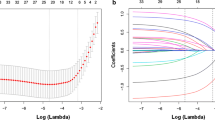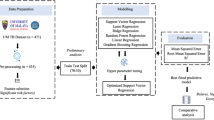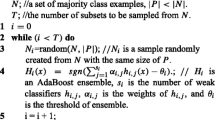Abstract
Tuberculosis (TB) is a communicable disease that poses a serious threat to the lives of people in the world. TB may be classified as drug-sensitive (DS-TB) or drug resistant (DR-TB). Clinical methods for diagnosing DR-TB require costly infrastructure as well as highly skilled expertise and also have major limitations due to the large amount of time taken to provide results. Researchers in the past have applied some machine learning methods in diagnosing TB, but not many studies have considered DR-TB and proved much satisfactory results. This paper examines the classification of DR-TB, based on existing symptoms, using logistic regression (LR) which is well known for its application in predictive diagnosis of diseases, and such approach is advantageous because they allow a quick evaluation and classification of disease outcomes in the presence of multiple and complex symptoms. To ensure that the symptoms selected have a direct relationship with DR-TB, a statistical test of hypothesis was established to prove the degree of association between the symptoms and DR-TB. In comparison to other techniques, the key advantages of the proposed LR classifier are its ability to show the degree to which a predictor variable affects the target variable and it works well with fewer feature variables. The comparative results with other machine learning techniques shows that LR classifier resulted in more accuracy score than others.





Similar content being viewed by others
References
Gagneux S (2018) Ecology and evolution of Mycobacterium tuberculosis. Nat Rev Microbiol 16(4):202–213. https://doi.org/10.1038/nrmicro.2018.8
R. Abebe, S. Hill, J. W. Vaughan, P. M. Small, and H. A. Schwartz, “Using Search Queries to Understand Health Information Needs in Africa,” CoRR, vol. abs/1806.0, no. ICWSM, 2018, [Online]. Available: http://arxiv.org/abs/1806.05740.
Behr MA, Edelstein PH, Ramakrishnan L (2018) Revisiting the timetable of tuberculosis. BMJ 362:1–10. https://doi.org/10.1136/bmj.k2738
Koch A, Cox H, Mizrahi V (2018) Drug-resistant tuberculosis: challenges and opportunities for diagnosis and treatment. Curr Opin Pharmacol 42:7–15. https://doi.org/10.1016/j.coph.2018.05.013
El Hamdouni M, Bourkadi JE, Benamor J, Hassar M, Cherrah Y, Ahid S (2019) Treatment outcomes of drug resistant tuberculosis patients in Morocco: Multi-centric prospective study. BMC Infect Dis 19(1):1–7. https://doi.org/10.1186/s12879-019-3931-5
Mirnejad R et al (2018) Biomedicine & pharmacotherapy clofazimine: a useful antibiotic for drug-resistant tuberculosis. Biomed Pharmacother 105:1353–1359. https://doi.org/10.1016/j.biopha.2018.06.023
Mahomed S, Padayatchi N, Singh J, Naidoo K (2019) Precision medicine in resistant tuberculosis: treat the correct patient, at the correct time, with the correct drug. J Infect. https://doi.org/10.1016/j.jinf.2019.03.006
Cohn DL, Bustreo F, Raviglione MC (1997) Drug-resistant tuberculosis: review of the worldwide situation and the WHO/IUATLD global surveillance project. Clin Infect Dis 24(1 SUPPL.):121–130. https://doi.org/10.1093/clinids/24.supplement_1.s121
C. Martin, N. Aguilo, and J. Gonzalo-asensio, “Vaccination against tuberculosis,” Enferm. Infecc. Microbiol. Clin., no. xx, 2018, doi: https://doi.org/10.1016/j.eimce.2018.07.011.
E. R. Widyasrini and A. N. Probandari, “Factors affecting the success of multi drug resistance ( MDR-TB ) tuberculosis treatment in residential surakarta,” pp. 45–57, 2015.
Huo Y, Zhan Y, Liu G, Wu H (2019) ScienceDirect Tuberculosis meningitis: early diagnosis and treatment with clinical analysis of 180 patients. Radiol Infect Dis 6(1):21–25. https://doi.org/10.1016/j.jrid.2018.07.002
N. Thain, C. Le, A. Crossa, S. Desai, and J. Sullivan, Infection, genetics and evolution towards better prediction of mycobacterium tuberculosis lineages from MIRU- VNTR data, Infect Genet Evol pp 1–8, 2018, doi: https://doi.org/10.1016/j.meegid.2018.06.029.
Kouchaki S et al (2019) Application of machine learning techniques to tuberculosis drug resistance analysis. Bioinformatics 35(13):2276–2282. https://doi.org/10.1093/bioinformatics/bty949
Dande P, Samant P (2018) Acquaintance to Artificial Neural Networks and use of artificial intelligence as a diagnostic tool for tuberculosis: a review. Tuberculosis 108:1–9. https://doi.org/10.1016/j.tube.2017.09.006
Rakhmetulayeva SB, Duisebekova KS, Mamyrbekov AM, Kozhamzharova DK, Astaubayeva GN, Stamkulova K (2018) Application of classification algorithm based on SVM for determining the effectiveness of treatment of tuberculosis. Proc Comput Sci 130:231–238. https://doi.org/10.1016/j.procs.2018.04.034
Aguiar FS, Almeida LL, Ruffino-Netto A, Kritski AL, Mello FCQ, Werneck GL (2012) Classification and regression tree (CART) model to predict pulmonary tuberculosis in hospitalized patients. BMC Pulm Med 12(1):40. https://doi.org/10.1186/1471-2466-12-40
AK Shrivastava, A Rajak, N Singhal, Modeling pulmonary tuberculosis using adaptive neuro fuzzy inference system, Int J Innov Res Comput Sci Technol, 4(1):24–27, 2016, [Online]. http://www.ijircst.org/DOC/7_IRP4510ca15a7a-932d-4ea3-b042-0e6438ef1e2d.pdf.
Yang L-H, Wang Y-M, Fu Y-G (2018) A consistency analysis-based rule activation method for extended belief-rule-based systems. Inf Sci (Ny) 445–446:50–65. https://doi.org/10.1016/j.ins.2018.02.059
Yang Y et al (2017) Machine learning for classifying tuberculosis drug-resistance from DNA sequencing data. Bioinformatics 34(10):1666–1671. https://doi.org/10.1093/bioinformatics/btx801
Lokeshkumar R, Jothi KR, Anto S, Kiran R, Narayanan H (2019) Prediction of multi drug resistant tuberculosis using machine learning techniques. Int J Eng Adv Technol 9(2):1764–1771. https://doi.org/10.35940/ijeat.b2531.129219
Chen ML et al (2019) EBioMedicine Beyond multidrug resistance: leveraging rare variants with machine and statistical learning models in mycobacterium tuberculosis resistance prediction. EBioMedicine 43:356–369. https://doi.org/10.1016/j.ebiom.2019.04.016
LHRA Évora, JM Seixas, AL Kritski Artificial neural network models for diagnosis support of drug and multidrug resistant tuberculosis, In: 2015 Latin-America Congr Comput Intell LA-CCI 2015, 2016, doi: https://doi.org/10.1109/LA-CCI.2015.7435954.
SS Skiena (2017) The data science design manual. 2017.
SAN Alexandropoulos, SB Kotsiantis, MN Vrahatis, Data preprocessing in predictive data mining, vol. 34, no. January. 2019.
J. T. Wassan, H. Wang, H. Zheng, C. Antrim, N. Ireland, and U. Kingdom, “Machine Learning in Bioinformatics,” pp. 1–9, 2018, doi: https://doi.org/10.1016/B978-0-12-809633-8.20331-2.
Huang J, Ling CX (2005) Using AUC and accuracy in evaluating learning algorithms. IEEE Trans Knowl Data Eng 17(3):299–310. https://doi.org/10.1109/TKDE.2005.50
Wong T, Yeh P (2020) Reliable accuracy estimates from k-fold cross validation. IEEE Trans Knowl Data Eng 32(8):1586–1594. https://doi.org/10.1109/TKDE.2019.2912815
Wagenmakers E-JJ, Farrell S (2004) AIC model selection using Akaike weights. Psychon Bull Rev 11(1):192–196. https://doi.org/10.3758/BF03206482
Author information
Authors and Affiliations
Corresponding author
Rights and permissions
About this article
Cite this article
Bridget, O.N., Prasad, R., Onime, C. et al. Drug resistant tuberculosis classification using logistic regression. Int. j. inf. tecnol. 13, 741–749 (2021). https://doi.org/10.1007/s41870-020-00592-9
Received:
Accepted:
Published:
Issue Date:
DOI: https://doi.org/10.1007/s41870-020-00592-9




